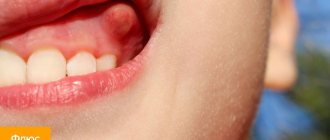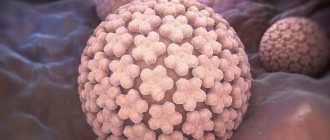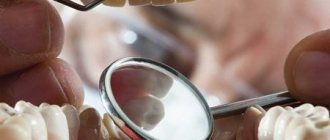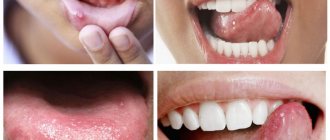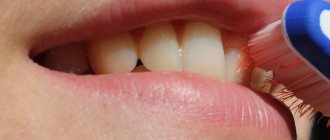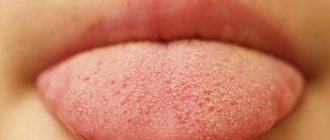Mechanism of occurrence
Growths on the tongue are formed from epithelium, fat cells, muscle fibers, nerves, blood and lymphatic vessels.
The tumor can arise against the background of embryogenesis disorders - the rudiments of foreign tissue structures get onto the tongue. Under favorable conditions, HPV begins to actively multiply and penetrates the basal cells of the epithelium. The DNA of the virus invades the DNA of cells, changes their functions, causes them to actively and chaotically divide and multiply.
Doctor about condylomas in the mouth:
Varieties
There are two main classifications of tongue tumors: according to the form of the disease and according to histological structure. Let's look at them.
The forms of tongue cancer are as follows:
- Ulcerative . With this form, an ulcerated, bleeding tumor is found on the tongue.
- Papillary . A dense growth forms on the tongue on the so-called “pedicle” or on a wide base.
- Infiltrative . The tumor is located deep within the organ.
Classification according to histological structure:
- adenocarcinoma;
- squamous cell carcinoma (the most common - 95% of cases);
- basal cell.
Reasons for appearance
Growths on the tongue appear against the background of dental diseases, dysfunction of internal organs, or due to non-compliance with hygiene rules. One of the main causes is the human papillomavirus (HPV). When it is activated, papillomas are formed. The risk group includes people with autoimmune pathologies and immunodeficiency conditions, people who are promiscuous.
Provoking factors:
- taking certain corticosteroids;
- stomatitis, glossitis, periodontitis, systematic injuries of the tongue and oral mucosa;
- indulging in hot or spicy foods leads to burns on the mucous membrane, which are poorly treated in a constantly humid environment;
- candidiasis, herpes;
- intestinal infections, helminthic infestations, metabolic disorders;
- frequent stress;
- smoking, alcohol abuse, working in hazardous industries;
- avitaminosis;
- changes in hormonal levels during pregnancy, menopause, and puberty;
- In children, papillomas appear due to the habit of putting dirty hands and objects into their mouths;
- contact with a sick person or carrier of infection.
In older people, growths on the tongue occur due to age-related changes in the body and improper care of dentures.
Congenital growths in children appear due to poor heredity, intrauterine development disorders, viral diseases of the mother during pregnancy, and birth injuries.
Doctors about HPV:
Methods of infection
The human papillomavirus is transmitted from person to person in different ways.
How people become infected with HPV:
- during sexual intercourse;
- in public places by domestic means - toilets, gyms, baths;
- self-infection – when papilloma is injured;
- intrauterine infection from mother to child.
For a long time, the infection does not manifest itself in any way; the virus begins to actively multiply against the background of weakened immunity.
Important! Barrier contraceptives do not protect 100% from human papillomavirus infection.
Kinds
There are 2 types of growths :
- Reactive - appear due to constant mechanical damage to the tongue, burns.
- Neoplastic – a consequence of disorders in the body. Most often, many such neoplasms appear in various parts of the oral cavity.
By shape
Growths on the tongue can have different shapes :
- Most often, neoplasms have clear boundaries and are colored white, pink, or red.
- The pointed formations are pink, have a stalk, cause significant discomfort, are often injured, grow quickly and occupy large areas of the mucosa.
- Flat growths have a rounded shape and resemble plaques in appearance. They grow slowly, are damaged less often, and practically do not bother.
- With stomatitis, reactions to medications, microtraumas, the growths look like pimples and blisters.
By location on the tongue
Growths can appear on any part of the tongue mucosa. The main places of localization are the tip, lateral surfaces, and root. Most often they occur on the side; less often, tumors form on the hard palate and lower surface.
What could it be
The most common types of growths on the tongue are lipomas, fibroids, papillomas, hemangiomas, and polyps.
| Type of growth | What does it look like |
| Papillomas | Flat - noticeably rise above the epithelium, wide, light in color. They are formed one at a time. Pointed (condylomas) are light-colored neoplasms in the form of papillae with a sharp end. They often merge into groups, grow, and increase in size. Externally similar to the comb or inflorescences of cauliflower. Thread-like - thin, protruding noticeably above the surface of the epithelium, colored bright red. Form groups. |
| Polyps | The neoplasm is flat or convex in shape in the form of a lump, formed from ectopic gastric mucosa. Most often it appears on the root of the tongue. |
| Adenomas | Formed from the glands of the mucous membrane of the tongue, it looks like a small ball. Localized on the tip and root of the tongue. |
| Lipomas | Consist of fat cells. They have a soft, lobed structure, located on the root of the tongue or under it. They grow slowly and do not hurt. Flap lipoma is flat. Can grow deep into tissues. Vulgar - a small bulge on the tongue. |
| Fibroids | Consist of connective tissue. Elastic, painless neoplasms are round in shape and sometimes have a stalk. They do not differ in color from the mucous membrane, sometimes they have a pale yellow or white tint. Neurofibroma contains nerve fibers and is therefore painful. It forms on the root of the tongue and does not differ in appearance from a regular fibroma. |
| Myomas | Growths on the surface of the tongue with a dense structure, up to 1 cm in size, are covered with a mucous membrane. Formed during the proliferation of muscle cells. |
| Hemangiomas | Vascular neoplasms look like red or blue spots. Sometimes they bleed. |
| Cysts | A retention cyst consists of muscle fibers and forms on the inner surface, the frenulum of the tip of the tongue. This is a small ball with liquid inside. |
| Botriomycomoma | The tumor is flat or spherical, reaches 10 cm in size, sometimes consists of several lobules. The shade varies from red to burgundy, the surface is smooth or covered with crusts. |
| Lymphangioma | Congenital benign neoplasm. Grows from the walls of lymphatic vessels. The surface is covered with bubbles, growths are located on the upper surface and tip of the tongue. They often become inflamed and are often accompanied by problems with bite and speech. |
| Struma | It is rare and consists of thyroid tissue cells. This is a small node up to 3 cm in size, formed at the root of the tongue. |
| Sialadenitis | The tumor appears against the background of inflammation of the saliva and sublingual gland. Causes: infectious pathologies, tuberculosis, mumps, syphilis. |
Clinical case – condylomas on the tongue:
Growths on the tongue in adults and children
Neoplasms in children and adults are equally common. In adults, these are mainly papillomas, adenomas, cysts, and lipomas.
In a child, papillomas are presented in the form of epithelial hyperplasia - the tissues of the tongue mucosa grow greatly. The active growth of HPV most often begins after influenza, sore throat, or a viral disease. Lymphangioma is diagnosed mainly in children under one year of age. Hemangiomas often occur in girls.
Description of pointed papilloma on the tongue
Papillomas on the tongue are a common form of human papillomavirus, which is presented in the form of a bumpy tumor or red papilla that is formed from epithelial cells of the oral cavity. They are small in size (up to two centimeters). Typically, formations appear in those parts of the epithelium that are most susceptible to injury: under the tongue and on the tongue, on its tip or side, back, at the root.
Papilloma on the tongue
Note! Particular attention should be paid to the occurrence of papillomas on the leaf papillae of the tongue, as they can develop into an oncological neoplasm, which often causes death.
Papilloma on the tongue
The growth begins to grow, as the connective tissue is penetrated by a large number of capillaries, nerves and lymphatic vessels. Over time, the papilloma (condyloma) turns into an ulcer, which bleeds and causes pain.
Typically, a growth on the root of the tongue is diagnosed accidentally; a person may not even be aware of its presence. But most often, the pathology clearly manifests symptoms, bringing not only physical, but also aesthetic discomfort to its owner. If processes appear under the tongue, they will cause discomfort to the person, as they will often be injured when eating.
Symptoms
When any growth forms on the tongue, pain and discomfort in the mouth occurs.
Problems with chewing food, speaking, and swallowing are often observed. Sometimes swelling and redness of the tissue occurs, and one or more papillae become enlarged. But all pronounced symptoms are absent in the initial stages; they appear when the tumor is of a significant size. Sialadenitis is manifested by general weakness, fever, pain and burning, swelling of the affected area, and an unpleasant taste appears in the mouth.
If the structure or color of the growth changes, it begins to grow rapidly - this may be a sign that the growth has degenerated into a malignant tumor.
Reference! In children, papillomas on the tongue occupy large areas, often the neoplasms are covered with a white coating.
Stages of the disease
Stages of tongue cancer
We offer you a table of correspondence between tongue tumor stages and clinical TNM classification, which uses the following designations:
- T – indicates the primary tumor: Tx – the primary tumor cannot be assessed;
- T0 – no data on the primary tumor;
- Тis – cancer in situ (pre-invasive stage);
- T1-T4 – the primary tumor is enlarged and/or widespread.
- Nx – regional lymph nodes cannot be assessed;
- M0 – no distant metastases;
Correspondence table for stages of tongue cancer TNM classification
| TNM stage | |
| 0 (carcinoma in situ) | Tis, N0, M0 |
| I | T1, N0, M0 |
| II | T2, N0, M0 |
| III | T3, N0, M0 or T1-T3, N1, M0 |
| IV | 4a: T4a, N0 M0 or T4aN1, M0 or T1-T4a, N2, M0 4b: T4b, any N, M0 or any T, N3, M0 4c: any T, any N, M1 |
Diagnostics
The dentist diagnoses and treats growths on the tongue.
Sometimes additional consultation with a dermatologist, endocrinologist, virologist, immunologist and otolaryngologist may be required. Examination and diagnostic methods:
- Anamnesis collection, examination of the oral cavity and skin. The doctor notes the color, shape and consistency of the growth on the tongue, its surface, and location.
- A general blood test shows the presence and intensity of inflammatory processes in the body.
- Tissue biopsy - biomaterial is sent for histological examination.
- PCR diagnostics – identifying the type of causative agent of the pathological process.
- Analysis for thyroid hormones.
- Digen test.
The methods allow us to identify the characteristics of the disease with high accuracy. But at the initial stage of HPV development, there are often false positive and false negative results.
Can growths be malignant?
At any moment, the growth can degenerate into a malignant tumor. Causes: constant damage to the tumor when talking or chewing food. Tongue cancer is classified as squamous cell; other forms, such as basal cell carcinoma or carcinoma, are rarely diagnosed.
Types of malignant tumors:
- An ulcer is a dense neoplasm that turns into an ulcer; it often hurts and bleeds. Located on the lower surface of the tongue.
- Infiltrative - a seal on the tip or back surface of the tongue, covered with a white coating. Constantly and severely painful.
- Papillary - a solid tumor on a stalk, formed on the lateral surfaces. Characterized by slow growth.
The prevalence of tongue cancer is 5 cases per 100 thousand population . The disease is easy to diagnose. But people often do not notice or ignore the symptoms of the pathology and go to the doctor with already advanced forms of the disease.
Formation of tongue cancer
Stages and symptoms of tongue cancer:
- Initial . Whitish spots appear on the tongue, most often on the lateral surfaces. These are papillary growths that look very similar to plaque. During examination, doctors often mistake formations for manifestations of glossitis and stomatitis. There is no pain or discomfort.
- Stage of clinical manifestations . The spots gradually become denser and transform into a tumor. Pain appears, which often radiates to the neck, ears, and temporal region; the tongue, neck, and face swell. When the formation becomes infected and suppurates, unpleasant odor from the mouth is disturbing. Problems arise with swallowing, articulation, and some areas of the tongue become numb. Metastases often spread to the cervical and submandibular lymph nodes.
- Launched . Necrosis and tissue decay begins, the tumor penetrates deep into the tongue.
- Terminal . Metastases extend beyond the oral cavity - lungs, liver, bones. Treatment at this stage is ineffective, and the prognosis is disappointing.
Specific diagnosis involves examining a smear of the fingerprint to identify cancer cells. A biopsy of the tumor is required. Additional research methods - ultrasound of the tongue, lower jaw and neck, x-ray or CT scan of the skull are prescribed to identify metastases.
Video about tongue cancer:
Treatment methods:
- Surgical . To radically remove a malignant tumor, partial resection or complete removal of the tongue is performed. When the tumor grows into the surrounding tissue, complete resection is performed, down to the bones of the lower jaw.
- Radiation therapy . The tumor is irradiated with X-rays. Radiotherapy is carried out before and after surgery.
- Polychemotherapy . A method of treating advanced forms of the disease, used in the presence of distant metastases. Drugs – Cisplatin, Methotrexate.
Surgery
Radio rays
Polychemotherapy
Attention! One of the main differences between malignant and benign neoplasms is that cancerous tumors are very dense. They rise somewhat above the mucous membrane and have an uneven surface.
Prognosis and prevention
Usually, the prognosis of the disease is good, provided that you contact a medical facility in a timely manner and carry out effective treatment in compliance with all doctor’s instructions.
During therapy, patients are advised to eat properly and lead a healthy lifestyle. In advanced cases, a cancerous tumor may develop, so do not delay your visit to the doctor.
For the purpose of prevention, doctors recommend monitoring oral hygiene, strengthening the immune system, leading a healthy lifestyle, avoiding promiscuity, and promptly treating concomitant pathologies and STDs.
Treatment methods
Drug therapy is carried out at the initial stage of the formation of papillomas in the mouth. All other growths are removed surgically. Folk remedies will help strengthen the body's defenses, prevent the growth of formations and the development of complications.
Until complete removal of growths from the diet, you need to exclude hard, sour, spicy, salty, hot and cold foods.
Medicines
The choice of medications depends on the type of growth, the cause of its appearance, the general condition and age of the patient.
How to treat growths:
Antiviral ointments and tablets - Acyclovir, Panavir, Altabor. Prescribed for papillomas to suppress HPV activity.
Acyclovir
Panavir
Altabor
Solutions for injections – Ferrovir, Immunomax, Cycloferon. More effective against HPV than pills.
Ferrovir
Immunomax
Cycloferon
Rectal suppositories with antiviral and immunostimulating effects - Galavit, Kipferon, Genferon.
Galavit
Kipferon
Genferon
Immunomodulators – Likopid, Neovir.
Lycopid
Neovir
Local antiseptics – Chlorhexidine, Chlorophyllipt. Eliminate inflammation, bleeding, prevent the spread of infection.
Chlorophyllipt
Vitamin A oil solution – prevents tumor growth. Treat the growth daily.
Vitamin A
Vitamin complexes – Supradin, Complivit, Ascorutin.
Supradin
Complivit
Askorutin
If growths are detected during pregnancy, immunostimulating drugs - Viferon, Reaferon. Safe immunomodulators for children - Amiksin, Viferon.
Viferon Reaferon Amiksin
Folk remedies
Non-traditional methods will not help cope with growths on the tongue.
But folk remedies have anti-inflammatory, antiseptic effects and help strengthen the immune system. They can be used to enhance the therapeutic effect of drugs. When removing growths surgically, folk remedies are not used.
Recipes:
- Pour 500 ml of boiling water over 20 g of dry plantain leaves and leave in a sealed container for 15 minutes. Drink the strained infusion 100 ml twice a day. The duration of treatment is 10 days. The product increases the body's resistance to viruses.
- Grind the peeled pink potatoes and squeeze the juice through cheesecloth. Drink 100 ml before breakfast. Duration of treatment – 3 weeks. The drink has a pronounced immunostimulating effect.
- Pour 500 ml boiling water 1 tbsp. l. dry chamomile or calendula inflorescences, leave for an hour. Use the strained infusion to rinse your mouth twice a day for 10 days. This remedy is a natural antiseptic and accelerates the healing process of damaged tissue.
- Mix 4 parts hemp oil with 1 part honey. Treat the growths with the mixture 5 times a day.
- Lubricate the new growths 2-3 times a day with fresh juice of sour apples.
- Treat the growths with raw chicken protein. Apply every 15 minutes for an hour. Do the procedure three times a day. The duration of treatment is 10 days.
- Mix 100 g of chopped beets, 200 g of carrots. Add 1 lemon, twisted in a meat grinder along with the peel, 30 ml of olive oil, 100 g of walnuts. There are 1-2 tbsp. l. in a day. This vitamin complex strengthens the immune system.
Important! It is often recommended to use fresh celandine juice to treat growths on the tongue. This method is dangerous, the plant is poisonous, you can get poisoned. If the juice gets on healthy tissue, it will cause a severe burn. Papillomas in the mouth cannot be cauterized with hydrogen peroxide, vinegar, or removed with thread.
Removing growths
There are several methods for removing growths on the tongue. The choice depends on the location of the neoplasm and the presence of contraindications in the person.
Methods for removing growths:
| Surgically | Excision of the tumor with a scalpel under local anesthesia. The wound is disinfected, sutured, and the stitches are removed after a few days. The method is affordable, but causes a lot of discomfort during and after the operation. Contraindications: pregnancy and lactation, exacerbation of herpes, acute infectious and inflammatory processes in the body. |
| Laser | The most popular method of removing growths. The tumor is removed quickly and without pain - the procedure lasts no more than 20 minutes. There is no infection in the wounds, relapses are rarely diagnosed, and the rehabilitation process is short. Laser therapy can be used to remove tumors in children over 2 years of age. Contraindications – tumor size more than 3 cm, diabetes mellitus, pregnancy and breastfeeding, diseases of the circulatory system. Disadvantages: high cost, inability to send tumor tissue for histology. |
| Cryodestruction | Before the procedure, it is necessary to cure all infectious diseases. The affected area is exposed to liquid nitrogen, which stops the growth of the growth. During the session, the risk of infection and bleeding is reduced to zero. The duration of the procedure is 30 seconds. Cryodestruction is safe for children over 1 year of age. But this method is painful, often scars form at the site of exposure to cold, and it is difficult to control the depth of freezing. The method is not used to remove multiple tumors. After the session, immunity sharply decreases, so after removing the growth you should immediately start taking immunostimulating drugs. Contraindications – epilepsy, convulsions, arterial hypertension, vasospasm, pregnancy and lactation. Cryodestruction is not suitable for removing growths on the uvula and sublingual frenulum. |
| Electrocoagulation | A special loop is placed on the growth, which transmits electric current deep into the tissue. The tumor is cut off, and the vessels are sealed at the same time, which prevents bleeding. The method is painful, recovery takes a long time. But scars do not form, relapses are rare, and several tumors can be removed at once. After an incorrect procedure, scars may remain. |
| By radio waves | Non-invasive, bloodless procedure. After removing the growth, tissue samples can be sent for histology. The method is rarely used, since radio waves negatively affect healthy tissue, and relapses often occur. Contraindications: pregnancy and lactation, exacerbation of chronic pathologies, acute forms of infectious diseases, heart disease, diabetes mellitus. |
| Sclerosis | Used to remove vascular growths. The vessels are cauterized; when the blood supply is cut off, the growth stops growing and developing. |
| Galvanocaustics | A small growth is cauterized with platinum wire, preheated under the influence of current. The method is fast, without the risk of infection and bleeding. |
| Ultrasound | Ultrasonic waves of high intensity destroy damaged cells, but do not affect healthy tissue. The method is safe and effective, but has a high cost. |
Before any surgical intervention, a complete sanitation of the oral cavity is performed.
How to remove papilloma on the tongue using electrocoagulation:
ethnoscience
Treatment with folk remedies is possible only after consultation with your doctor. Typically, such treatment acts as an additional method, but it is not recommended to use it as an independent method of therapy, since complications such as oncology may develop.
Together with medications, the patient can use herbal infusions and decoctions to increase the body's defenses. Infusions can be prepared from rose hips, lemon balm, chamomile, plantain and other herbs.
You can drink 100 milliliters of red potato juice every day.
Celandine has a good effect. Its juice is applied to the affected areas if the growths are small. The procedure is repeated three times a day, the full course of treatment is about one month.
Treatment prognosis
With timely detection and proper treatment, tumors can be completely eliminated. Problems may arise in older people, people with immunodeficiency conditions, and chronic diseases.
Possible complications
Negative consequences are most often associated with frequent injury to growths.
Why are growths on the tongue dangerous?
- abscess;
- infectious processes in the oral cavity;
- sepsis;
- severe intoxication;
- tissue necrosis;
- frequent relapses;
- degeneration into a malignant tumor.
If the cyst ruptures, the tongue may shift, speech, breathing and swallowing may be impaired.
Important! Hemangiomas and lymphangiomas most often recur.
How to avoid relapse of the disease?
After the growth has been removed from the patient's tongue, the person should not relax. Typically, single papillomas do not recur, but with multiple formations, the reappearance of growths on the body occurs quite often.
Therefore, after surgical removal of papillomas from the surface of the tongue, you should:
- Take precautions and limit risk factors (see above).
- Take a course of antiviral treatment as recommended by your doctor.
- Seasonally take immunomodulatory drugs and vitamin complexes, which your doctor will also help you choose.
- Maintain oral hygiene and avoid tongue injuries.
One of the main conditions for achieving a favorable outcome in the fight against papillomas is choosing the right medical center, since much in the procedure for removing a tumor depends on the actions of the doctor. We hope that the recommendations of specialists from the LeaderStom network of dental clinics helped you clarify the picture of the growth that has developed on your tongue, and now you can solve this problem without unnecessary emotional distress.
Preventive measures
The main methods of prevention are strengthening the immune system and maintaining good hygiene.
How to prevent growths from appearing:
- to refuse from bad habits;
- exercise regularly, spend more time outdoors;
- avoid stressful situations, learn to relax, master meditative techniques;
- wash your hands frequently and thoroughly, especially after going outside or visiting the toilet;
- Always use only your own towels and personal items;
- adjust your diet - give up unhealthy and heavy foods, eat more vegetables and fruits, fermented milk products, cereals, lean meat and fish;
- observe the drinking regime - you need to drink 1.5-2 liters of clean still water per day;
- promptly identify and treat dental diseases and pathologies of internal organs.
An effective method for preventing the formation of papillomas on the tongue is HPV vaccination. The Cervarix and Gardasil vaccines have contraindications and side effects, so they are not suitable for everyone. Vaccination does not completely protect against infection, but it does promote the production of antibodies that help the body fight infection more quickly.
It is advisable to vaccinate up to 26 years of age. The protective effect is designed for 8 years. Contraindications: pregnancy and breastfeeding, any gum problems.
Drug therapy
Interferon
Treatment of papillomas should be comprehensive, which includes drug and surgical therapy. Before prescribing medications, the doctor cleans the oral cavity, eliminating white plaque and pockets through which infection can enter the body.
For this purpose, the oral cavity is sanitized, and then treated with ointment, which has an antiviral effect. This could be, for example, “Bonaftone”, “Adimal” or “Megosin” ointment. It is necessary to treat the oral cavity from below and from above.
Then the doctor prescribes antiviral and immunostimulating drugs, for example, Interferon or Panavir, and vitamin complexes. Their action is aimed at increasing the body's defenses. The doctor selects medications based on the individual characteristics of the body, taking into account contraindications and side effects.

